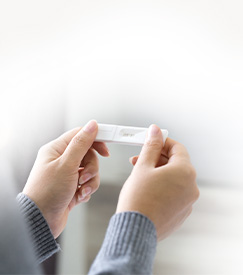 Attitudes and trends in adoption tend to change with different societal options. Where previous decades saw closed adoption as well as international adoption as popular, in recent years there has been a noticeable spike in open adoptions. This style of adoption does have some big benefits for both sides of the adoption process, but can also have some drawbacks or challenges which need to be successfully navigated.
Attitudes and trends in adoption tend to change with different societal options. Where previous decades saw closed adoption as well as international adoption as popular, in recent years there has been a noticeable spike in open adoptions. This style of adoption does have some big benefits for both sides of the adoption process, but can also have some drawbacks or challenges which need to be successfully navigated.
This article aims to explore what open adoption is as well as address its inherent challenges and how to handle them should they arise.
What is the Difference Between Open and Closed Adoption?
Long considered the traditional form of adoption, and still the standard across most of the world, closed adoption is where the birth mother or birth parents place their child with an adoptive family and relinquish all contact with the child. Basically like a closed door.
Open adoption leaves this door open, which allows the birth parents and birth family to openly communicate and have contact with the child. The level of contact varies from adoption to adoption from letters and email updates to phone calls and full visitation. Open adoption is most common domestically, although open international adoptions are not unheard of.
The Challenges you May Face
As every adoption is unique, the challenges that both families can face will likely vary. Common issues families can face however include:
- Decision making
- Disagreements
- Issues with communication
- Changes in situation(s)
Decision Making and Disagreements
A large proportion of the decision making in an adoption occurs in the first months and years. One of the biggest early decisions that needs to be made is how the birth family will be addressed. Birth parents for example may wish to be recognised as mother and father of the child, but this could cause unnecessary confusion, so the topic may need discussion. Issues around social media and information sharing can also be a tenuous topic that needs talking about.
Decision-making and disagreements can be overcome by both parties being reasonable and flexible in their wants and needs. Being understanding of the other sides thoughts and feelings will go a long way in ensuring a cordial discussion.
Issues with Communication and Changes in Situation(s)
At some point in the open adoption, communication may break down. This can happen because one side isnt doing their part, which can cause strain and tension. Sometimes birth families can want a level of communication and connection with the child that is unrealistic, and sometimes the adoptive family can be too limiting. Families might move further away from one another as well, which can make physical meetings a challenge.
Challenges such as these have to be dealt with and negotiated before any ill will occurs. They can be handled with strong communication, honesty, and understanding. Both families need to work together to make sure that no one feels neglected and everyone’s needs are met as best as possible.
With good communication comes a strong bond and a powerful combined family unit that is focused on raising an adopted child in a loving and supportive environment that allows the child to thrive. A strong family unit of birth and adoptive family can help ensure that all challenges are faced head on and conquered successfully.






